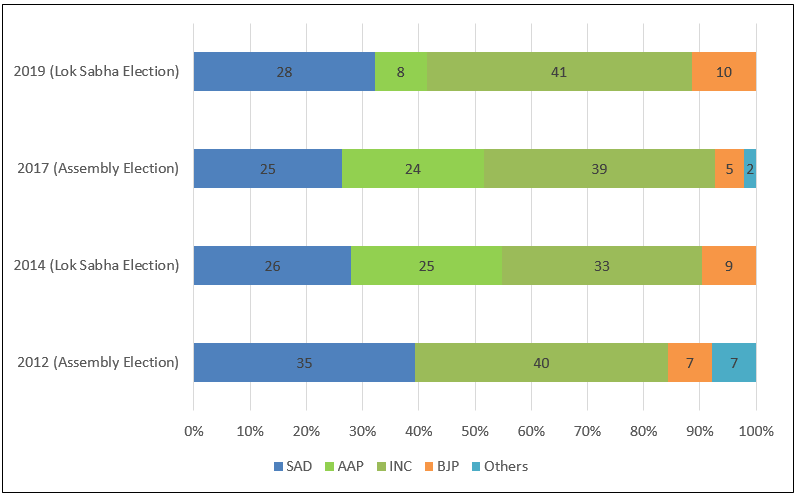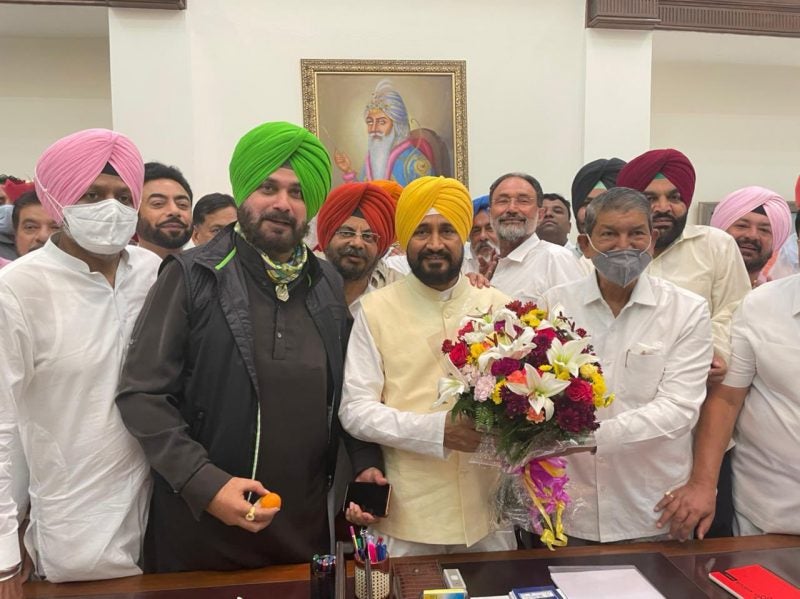Summary
The resignation of Punjab Chief Minister Amarinder Singh has dented the ruling Congress and thrown up new political equations before the 2022 Assembly election.
The internal rift within the Punjab unit of the Congress led to the resignation of the state’s chief minister, Amarinder Singh, on 18 September 2021. Tensions within the Punjab Congress had been simmering for the past few months with former minister Navjot Singh Sidhu spearheading the opposition against the 79-year-old and increasingly isolating him. Although the central leadership had brokered an uneasy truce on 18 July 2021 by appointing Sidhu as the state’s Congress chief, Amarinder’s resignation has thrown the party into turmoil months before Assembly elections in early 2022. Charanjit Singh Channi replaced Amarinder on 19 September 2021.
Before discussing the ramifications of the leadership change in one of the few states where the Congress is in power, it is important to understand why Amarinder was forced to resign. While the revolt against him by party legislators was the primary reason, Amarinder was also seen to have become unpopular and inaccessible. One of the reasons for this was his failure to punish the perpetrators of the sacrilege in 2015 of the holy book of the Sikhs at Bargari. Another was his inability to tackle the drug problem that has ravaged the state. In fact, in his first press conference after winning a majority in 2017, Amarinder declared that he would wipe out the drug menace within four weeks. However, even by the end of his tenure, the drug problem has remained.
The question now though is how Amarinder’s resignation and the appointment of Channi will impact the Congress’ prospects in the coming Assembly election. The process of change, which involved infighting within the Congress for several months and a two-time chief minister publicly expressing his unhappiness, was messy and would have probably sent a wrong signal to voters. This was in sharp contrast to how the Bharatiya Janata Party (BJP) sought the resignation of its chief ministers in the poll-bound states of Uttarakhand and Gujarat, as well as in Karnataka, to make way for new faces. Even if there was discontent in the BJP, it did not find public expression.
If the process of leadership change in Punjab was flawed, the choice of Channi, who was Minister for Technical Education and Industrial Training in Amarinder’s cabinet, as chief minister is an astute one. Channi is the first Dalit or Scheduled Caste chief minister of Punjab and the Congress is obviously eyeing the substantial Dalit vote in the state. Dalits constitute 32 per cent of Punjab’s population (of whom a third are Dalit Sikhs), which is the highest proportion of any Indian state. There are 54 constituencies, out of a total of 117 in the Punjab Assembly, where Dalits make up at least a third of the electorate and between 20 and 30 per cent of the electorate in another 45 constituencies. According to CSDS surveys, the Congress has since 2002 done better than the primary opposition party – the Shiromani Akali Dal (SAD), which had allied with the BJP for over two decades – in attracting both Dalit Sikh and Dalit Hindu votes. If the Congress were to retain power, the Dalit vote is likely to be critical.
However, Jat Sikhs, who comprise around 25 per cent of the state’s population, have traditionally dominated Punjab politics. By appointing Sidhu, a Jat Sikh, as its party president, and Channi, a Dalit Sikh, as chief minister, the Congress might have a winning combination. Channi is also seen as acceptable to the anti-Amarinder faction within the Congress. Two deputy chief ministers – Sukhjinder Singh Randhawa and Om Parkash Soni – have been appointed to balance caste, religious and power equations. The Cabinet was rejigged on 26 September and seven new faces inducted. Finally, Channi’s appointment could negate to some extent the advantages of the tie-up between the SAD and the Bahujan Samaj Party (BSP), which is expected to pull Dalit votes.
The coming elections will be the first in over two decades where the SAD will not be partnering the BJP, having broken off their alliance in 2020 over the farmers’ protests against the central farm laws. The SAD will be relying on anti-incumbency and its tie-up with the BSP to carry it through. In the face of the farmers’ protests, the BJP’s vote share, which stood at 10 per cent in the 2019 general election and five per cent in the 2017 Assembly election, is unlikely to increase (Figure 1). The other factor in the election will be the Aam Aadmi Party (AAP), which won nearly a quarter of the vote share in Punjab in the 2014 general election and 2017 Assembly election. In 2019, however, the AAP failed to match it earlier performance with its vote share falling to eight per cent.
Figure 1: Vote share of parties in Punjab Assembly and general election

Source: Election Commission of India
With Assembly elections a few months away, the Congress will be hoping to get its house in order and present a united front. However, the Congress high command and Channi’s task will be cut out to keep the warring factions in Punjab at bay and contain Sidhu’s ambitions. It will also be interesting to see the course of action Amarinder takes. He has already promised to field a “strong” candidate against Sidhu in the 2022 elections, but whether he will openly rebel remains to be seen.
. . . . .
Dr Ronojoy Sen is a Senior Research Fellow and Research Lead (Politics, Society and Governance) at the Institute of South Asian Studies (ISAS), an autonomous research institute at the National University of Singapore (NUS). He can be contacted at isasrs@nus.edu.sg. Ms Shavinyaa Vijaykumarr, a Research Analyst at ISAS, assisted with the data visualisation. The author bears full responsibility for the facts cited and opinions expressed in this paper.
Photo credit: Twitter/ Navjyot Singh Sidhu
-
 More From :
More From :
-
 Tags :
Tags :
-
 Download PDF
Download PDF



